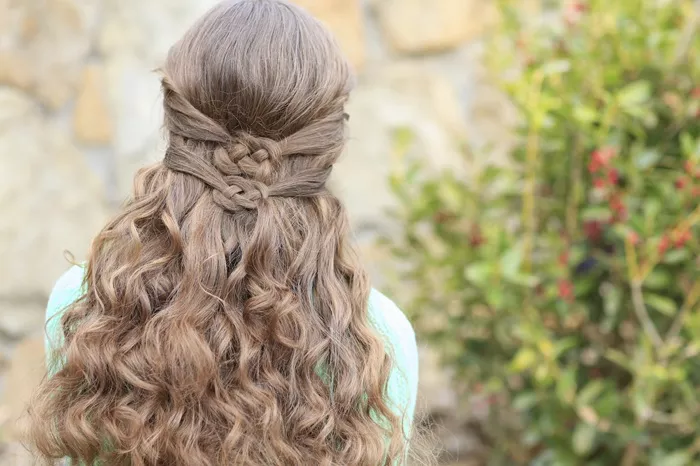Managing different hair textures is a common challenge. It’s not unusual for someone to have 4A coils at their hairline while their remaining hair features 3C curls. However, problems arise when the two primary textures are significantly different, such as straight hair combined with 2C curls. This specific combination has gained attention on TikTok, where users have named it “Irish waves” or “Irish hair.”
Jacelyn Bautista, a hairstylist at NYC’s The Team Salon, explains that the term “Irish waves” refers to hair that is wavy from the occipital bone downward but smoother on top. This pattern is often found in those of Irish descent, although it can appear in anyone. According to hairstylist Vernon François, the texture differences result from varying follicle shapes across the scalp.
This hair texture is relatively common, as noted by Ohio-based hairstylist Libby Brenner, who frequently encounters it in her practice. The term “Irish hair” has thus been adopted to describe this phenomenon.
Washing Irish Hair
Proper washing is key for managing Irish hair. Since this hair type features multiple textures, it’s important to use products suited for both straight and wavy hair. The Amika Normcore Shampoo is recommended for its lightweight formula, which includes coconut acid to remove buildup without stripping moisture and fatty acids to hydrate without heaviness. Complementing it with Normcore Conditioner adds moisture without greasiness, thanks to shea butter.
For specific concerns like damage or oiliness, consider shampoos and conditioners that address these issues. The Briogeo Superfoods Mango + Cherry Balancing Shampoo and Conditioner are ideal for oily scalps and fine or wavy textures, balancing oil production and preparing hair for styling.
Styling Irish Hair
Styling Irish hair can be challenging due to the different behaviors of the textures. Some users report that products meant to enhance waves can weigh them down, leading to frustration. Straightening the hair can be a straightforward solution, using a blow dryer and flat iron for smooth strands.
For those who prefer to enhance natural waves, a strategic approach is necessary. The goal is to blend the two textures without causing frizz or using excessive product. Begin with damp hair, applying a lightweight curl cream or gel evenly. Bautista recommends Davines Gel Cream for its soft hold and natural pattern enhancement. For users with more curls underneath, Laura Polko suggests a mousse like John Frieda Dream Curls Curl Reviver Mousse, applied primarily to the top layer to add texture without weighing down the hair.
After applying your chosen product, use finger twisting to define waves. Wrap small to medium sections of hair around your finger to create curls or waves. Focus on the top layers to highlight them, while less twisting is needed for the bottom layers. Flip your hair upside down and scrunch with a microfiber towel to remove excess moisture and help maintain shape. A diffuser, such as the one on the Dyson blow dryer, can also assist in even drying.
In her approach, Brenner keeps the hair saturated with water using a spray bottle and applies gel in sections. She scrunches the hair while it’s upside down and finishes with a strong-hold gel for better curl definition.
Best Haircuts for Irish Hair
The right haircut can enhance the look of Irish hair. Both Polko and Bautista recommend opting for layered cuts, which help add movement and bring out the natural waves. Cuts like the shag or octopus, featuring face-framing layers, work well by shortening the top layer and allowing the underlying waves to shine.
By following these styling and cutting techniques, you can better manage and highlight the unique textures in your hair.

